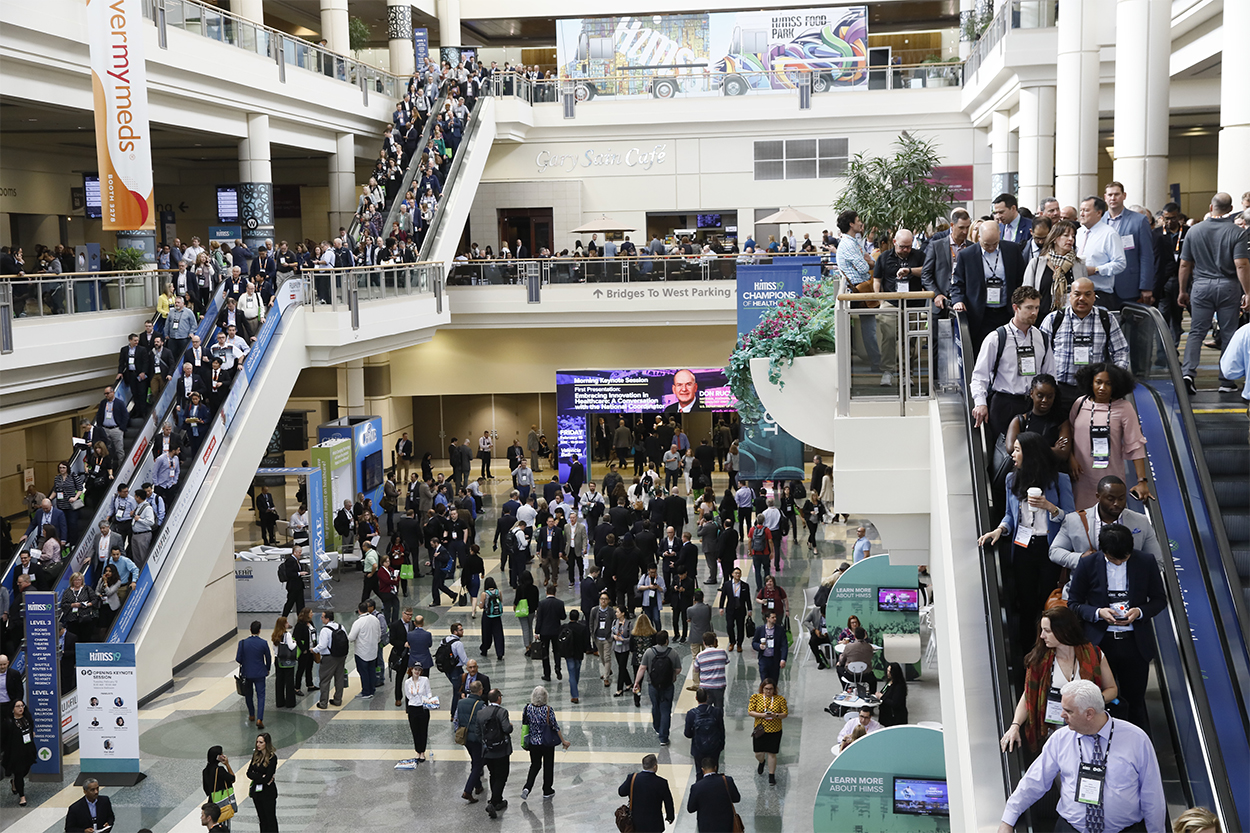There was a ton to unwrap from HIMSS19 in Orlando, Florida. From the new interoperability rules that were released by CMS, to the glitz and glam of the overwhelming number of healthcare company booths on full marketing display, there was a lot to digest.
Luckily, some of our naviHealth experts sat down and tried to make sense of all of it for you. Here are three overarching themes from HIMSS19 that will have a significant impact in 2019 and beyond.
Patient engagement
As one of the hot topics of at HIMSS19, patient engagement took on a life of its own at this year’s conference. But what constitutes patient engagement in today’s society? And, at an even higher level, what is the definition of patient engagement?
While the definition may have varied from booth to booth, the key audience that the vendors seemed to be targeting was obvious: millennials and those who were currently using modern-day technologies such as smartphones on a very frequent basis.
But what about everyone else?
“Although we saw a lot of vendors with creative definitions and ideas on patient engagement and patient facing apps, there seemed to be a missing segment that the vendors weren’t truly targeting, which is the older generation,” said naviHealth’s Director of Product Management Meagan Brasher. “The older generation has started to adopt use of smartphones, tablets and other technologies, however we are just beginning to see that trend as baby boomers age. The industry is still waiting for a scalable way to engage this older audience.”
“The baby boomers and the older generations are no longer shying away from technology – it’s time to start marketing to them outside of the commercial, employment-base adoption strategy that many vendors are currently relying on,” said naviHealth’s Director of Product Strategy, Provider Solutions Maren Beus. “If we start reaching out to the older population and start asking the question of how and why they would use this type of technology, it would play a significant role in improving patient engagement.”
AI
If there was a buzzword at HIMSS19, it was AI, or machine-learning. If you explored the vendor booths, you inevitably heard or saw signage regarding their deep dive into AI and how it will impact health care. Although AI was talked about at last year’s event as well, this year’s conversations showed a significant progression in the topic.
“At last year’s event, the discussion around AI was centered around what it meant and how it could impact the industry. This year, it was much more focused on the implementation and integration of AI into everyday life and day-to-day operations in healthcare organizations,” Brasher said. “This year, the AI conversation had a much more human element to it – including how to evolve the products from what they can provide to how they can provide what we need.”
Chuck Czarnik, VP of Data Management and Analytic Solutions at naviHealth, believed that while AI may have been the buzzword and the conversations are moving in the right direction, the technology itself seems to be a bit cloudy still.
“AI is gaining momentum, but it’s still in its infancy, and it potential is mostly untapped” said Czarnik.
The future of PAC
Overall, HIMSS19 brought to light a need to better engage patients while beginning to understand how new technologies and opportunities will be implemented in health care to better fit the needs of organizations and their patients.
What was left was more questions about what the future holds, particularly for the post-acute care world.
“There is clearly a generational transition in technology that needs to be addressed,” said Monica Greene, naviHealth manager for technical delivery and optimization for Health Plans and BPCI Operations. “As an industry, we need to start meeting the patients where they are and finding more ways to interact with them.”
And with the rise of healthcare consumerism, how will the industry handle all of this new data? Czarnik believes that may be the main reason why non-healthcare organizations such as Google and Amazon had tons of excitement and a large volume of traffic at HIMSS19.
“Data is already coming in faster than the healthcare system can consume it,” Czarnik said. “This trend will only accelerate. I’m excited to see big data players like Google and Amazon getting involved. To meet the data challenge, we need their ideas to help make it actionable at scale.”



